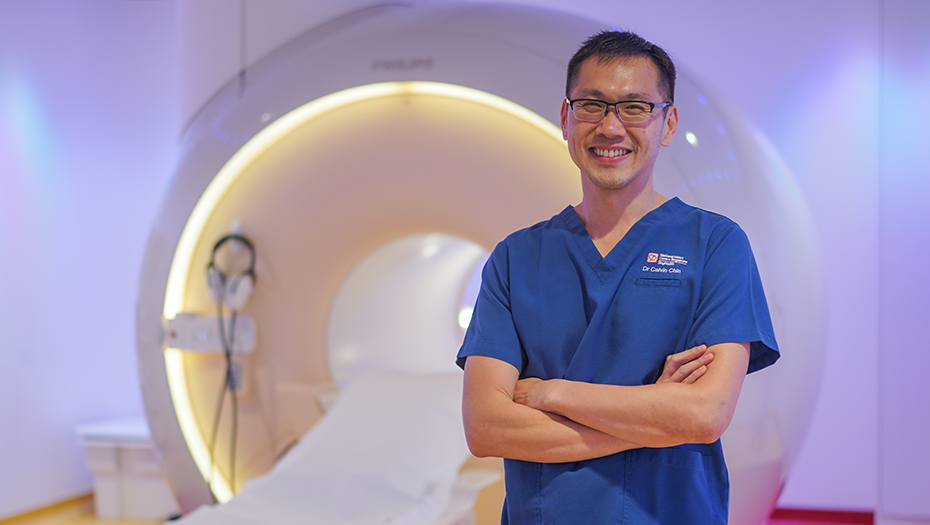When it comes to body fat and your health, it is what is inside that really matters. Studies have suggested that having fat surrounding and inside organs such as the liver is strongly linked to diabetes and heart disease. Assistant Professor Calvin Chin, Clinician Scientist and Senior Consultant, Department of Cardiology, National Heart Centre Singapore (NHCS) explains why more research is needed in this field and how advanced imaging tools can make a difference in early intervention.
How does fat in the liver affect other parts of the body?
That is exactly the question we want to answer! The liver plays a vital role in breaking down and storing glucose and fat so the body can use it for energy. In conditions such as Nonalcoholic Fatty Liver Disease (NAFLD), too much fat is stored in the liver. This is linked to insulin resistance which can cause raised blood sugars, as well as high blood cholesterol and triglycerides. Insulin resistance, obesity, high cholesterol and triglycerides are classed as cardiometabolic disorders that are inter-related and increase the risk of cardiovascular disease and Type 2 diabetes.
Can you judge the amount of internal fat someone has by their external appearance?
No. External fat (obesity) does not always account for the variation in internal fat around and inside the liver, heart and kidneys. For instance, a healthy body weight can still carry excess internal body fat, and this is especially true in Asians.
We performed magnetic resonance imaging (MRI) scans on the livers of 100 healthy Singaporeans and found that 30 per cent had NAFLD. Although the incidence of fatty liver in our study is comparable with research done in the West, we found that the condition affected our Asian study volunteers at a lower body weight (Body Mass Index) compared to Caucasians. We also noticed an association between the amount of fat in the liver and an enlarged heart which is an important risk factor for cardiovascular disease.
What is the best way to measure internal body fat?
Fat can be detected with an ultrasound scan, but the quality of the image is not clear enough to accurately determine the amount of fat present. Until recently, doctors had to rely on liver biopsies to ascertain the fat content and the progression of fatty liver disease. However, taking a sample of the liver is an invasive procedure that can cause pain for the patient and carries the risk of complications. Fortunately, thanks to technological developments, MRI scans now provide a safe and pain-free alternative method for detecting and measuring body fat, making them ideal tools for research.
NHCS is planning to establish a cardiometabolic imaging centre that will be equipped with a new MRI scanner to expand our research capabilities. This will enable us to track the progression of diseases, effectiveness of new treatments and find much needed answers to help us better understand the health implications of different fat stores in the body. With this information, the team could also find out if there is a threshold level of body fat which increases the risk of diabetes, heart and liver diseases in Asians. This would really impact the way in which we deal with the causes of these conditions, especially when they look set to affect more people in our populations.
How will this research benefit patients?
Understanding the complex interaction between body fat, cardiometabolic risk factors such as insulin resistance and disease is crucial in the development of novel drug therapies and to improve the population’s health.
According to the National Population Health Survey, an estimated 9 to 34 per cent of Singaporean adults are living with such disorders, so there is an urgent need to prevent them from progressing to heart disease and diabetes.
Many of our patients only discover they have advanced heart disease when they are rushed to NHCS for life-saving treatment. If we can identify people who are at high risk or in the early stages of cardiometabolic disorders, then we can intervene earlier or even provide personalised treatment to reverse or slow down the progression of the disease and hopefully, improve their health.
This research project is featured in conjunction with the SingHealth Duke-NUS Gala Dinner 2019, a biennial signature fundraising event in support of medical research and education. To make a gift towards Cardiovascular Sciences ACP, please email us at development@nhcs.com.sg or call 6704 2384.
Other stories you might like:


















 Get it on Google Play
Get it on Google Play